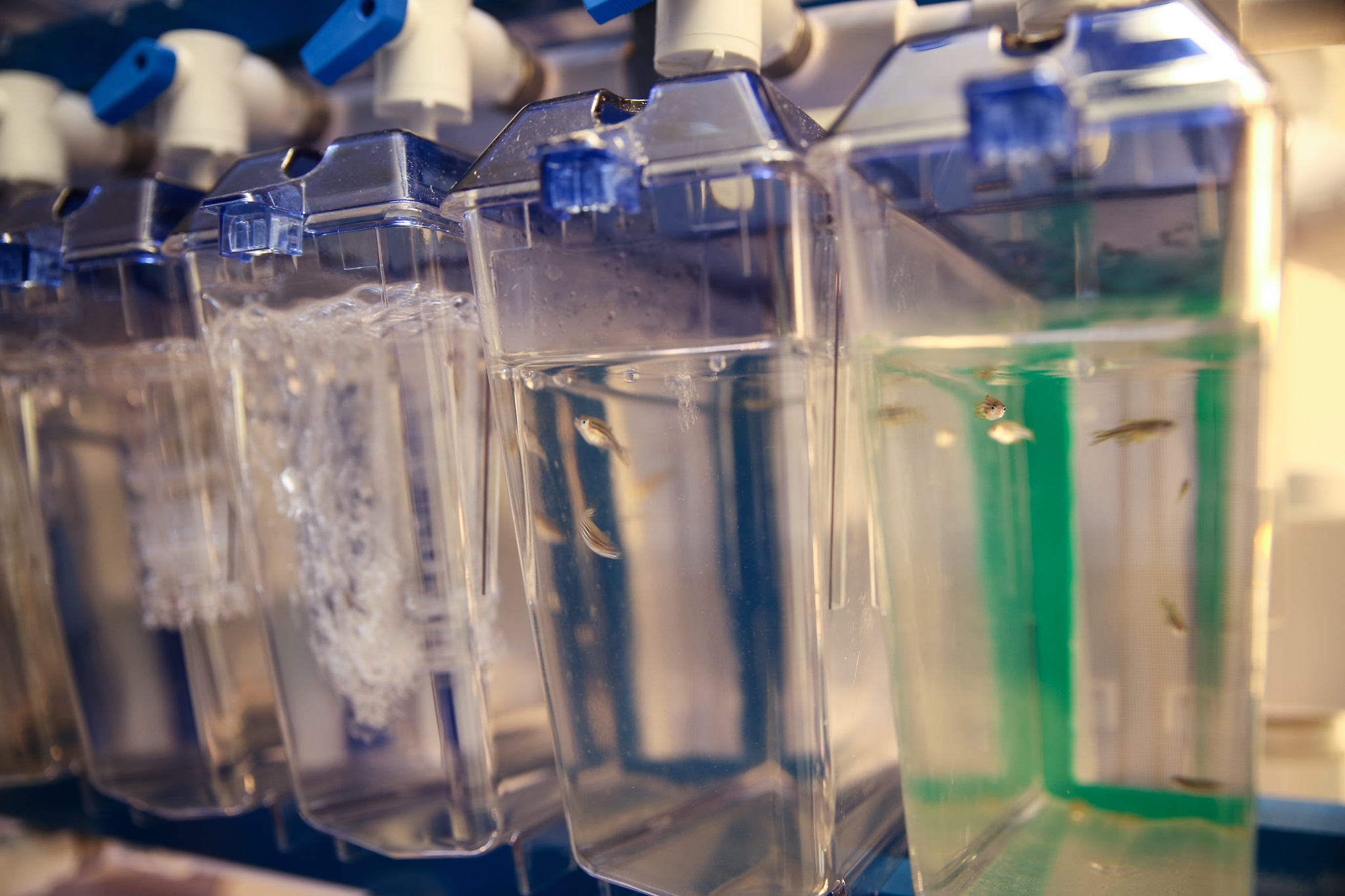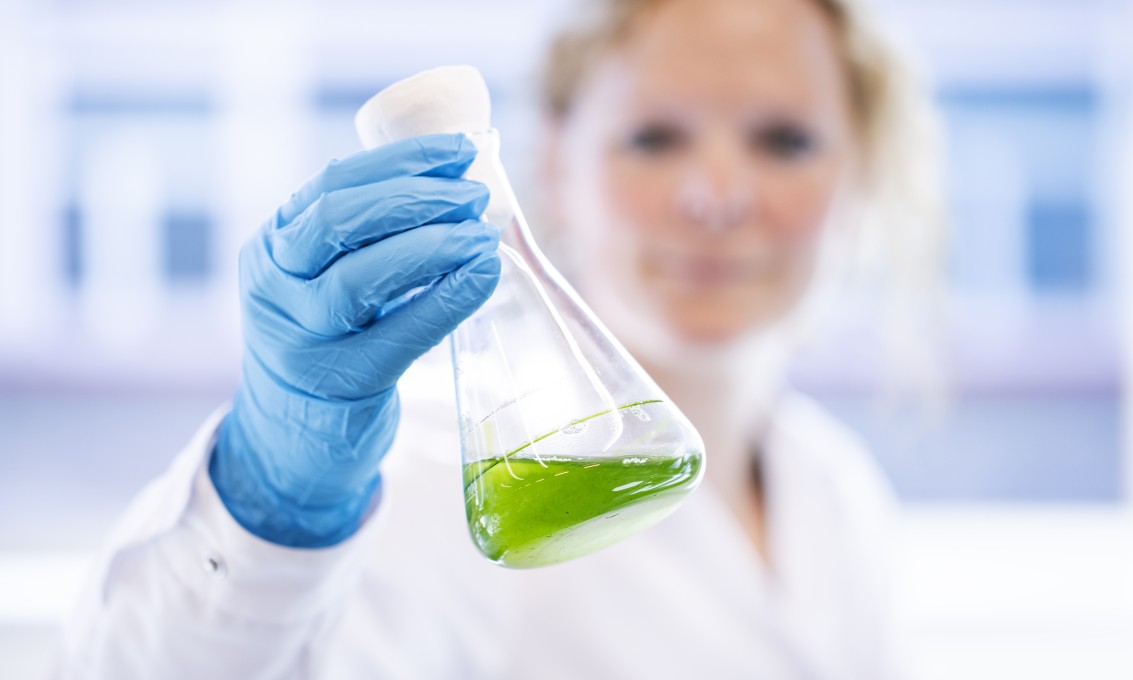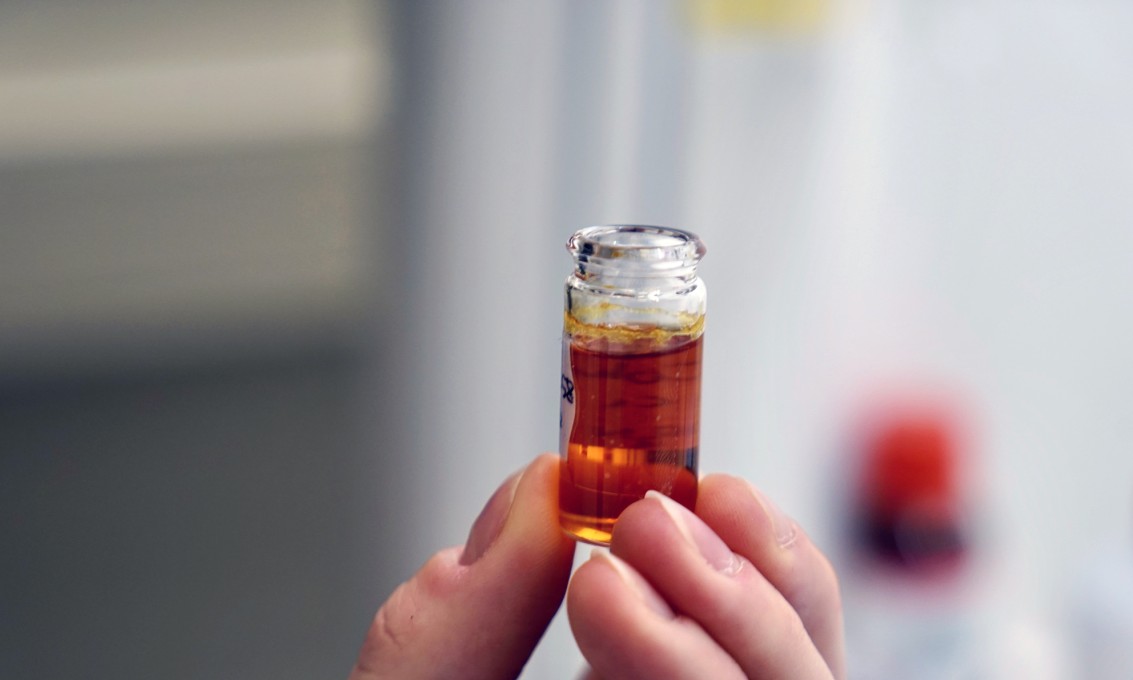The Faculty of Science and Technology at UiS has several laboratories within the field of biology and molecular biology. Here is an overview of relevant equipment and facilities.
These study programmes use the laboratories in teaching:
Tissue culture laboratory
Tissue culture is an important tool in biotechnology, and can be applied to study for example mechanism of disease development and drug effects on the cellular level.
Our lab is fully equipped for cell culture, and the lab is divided in separate zones for work with mammalian cells, fish cells and parasites. The laboratory is located in close proximity to downstream analytical equipment such as flow cytometers and microscopes.
Contact person: Julie Nikolaisen
Flow cytometry
Flow cytometry is an high throughput method for studying single cells in a suspension. At UiS we have several flow cytometers and also cell sorters.
.jpg)
Cells can be labelled with fluorescent conjugated antibodies or stained with fluorescent markers. The cells are passing the laser beam as beads on a sting due to hydrodynamic focusing, and diffraction and fluorescence intensity is measured for each individual cell, and gives data on cell size, granularity and the relative level of the fluorescent marker. We also have the possibility to sort individual cell or cell populations of interest for continued culture or downstream analysis.
Contact persons: Hanne Røland Hagland og Krista Michelle Kaster
Sequencing
Sequencing methods have been continued to improve since the origin and today, with the advancements of new technologies in the field, scientists are able to sequence whole genomes of different organisms for a wide range of applications. These are different sequencing platforms which, differ from each other in terms of method and length of sequenced template and which one to use is crucial in relation to the results and subsequent analysis methods one can use.

Next generation Sequencing: Second generation sequencing methods, also called next generation sequencing (NGS), are currently the most used sequencing method. NGS also known as massively parallel sequencing technologies and can produce thousands or millions of sequences simultaneously. Third-Generation Sequencing: The method is relatively new and called the next era of DNA sequencing technology, termed third-generation sequencing (TGS). Third generation sequencing, also called long-read sequencing, is mainly used for sequencing nucleotides in long sequences without having to divide the template up into small pieces. Chromium System (short-read sequencing technologies): An Advanced technology (Next GEM technology) with a single cell approach. Next GEM (Gel Beads-in-emulsion) technology, from 10X genomics is a microfluidics-based method which, enables integrated analysis of single cells at a massive scale to generate tens of thousands of single cell partitions, each containing an identifying barcode for downstream analysis.
Contact persons: Dugassa Nemie Feyissa
Zebra fish laboratory
Zebrafish are a model fish species that have a fully sequenced genome and conserved molecular regions that allow direct comparisons to higher level vertebrates, such as humans.

These small aquatic fish are utilized, from the embryo till the adult stages, in multiple disciplines. Due to their spawning frequency, fast developmental time, and translucent bodies during early life stages, they are ideal organisms to work with to answer questions regarding developmental biology, epigenetics and studying mechanisms of disease.
The equipment and resources available in the zebrafish facility includes a state-of-the-art, flow through aquarium system that offers individual tanks to rear and spawn adult zebrafish and offers the ability to work with transgenic zebrafish lines. A stereoscope with a temperature controlled heatblock, a high-definition color camera capable of taking images and videos, including fluorescence, and computer capable of processing large video files is available for use. A microinjector is attached to the stereoscope that allows molecular manipulation in embryonic zebrafish (microRNA and morpholino injections) and chemical dosing to simulate maternal transfer. A temperature controlled and photoperiod adjustable incubator is available when working with early life stages. The zebrafish lab can be used by bachelor students working with a faculty member at UiS, current master and Ph.D. students, postdoctoral researchers, and visiting scholars.
Contact persons: Daniela Maria Pampanin and Federico Fenaroli
You might also be interested in:
He has 3D printed a training model for spinal anesthesia
Øyvind Time's master's thesis can help make everyday life easier for healthcare personnel who must learn how to take a f...
The transition of the oil cities Stavanger and Macaé
Carlos Eduardo Lopes da Silva has compared the two oil cities Stavanger and Macaé in Brazil.
Whole Slide Imaging, Digitalization and Automation of Histopathological Lesion Evaluation in Marine Organisms
Use of histopathology to identify changes in marine species in response to contaminants is a long-known practice.
Can blueberries prevent dementia?
Drinking juice with a lot of antioxidants, for example from blueberries, can be beneficial in preventing dementia. New r...
Functional materials and process chemistry group
We are developing functional materials and process chemistry for energy and environmental applications.
UiS partner in new One Health project
The purpose of the new research project is to support advancement of Blastocystis research by bringing together professi...
One Health – connecting human, animal, plant and environment health
Our planet faces many challenges that we can only tackle in an interdisciplinary manner. The One Health ambition encompa...
SØLSTAIN: Red seaweed reproduction, growth and nutritional quality
Our research aims to contributing on a sustainable use of the red seaweed Palmaria palmata in aquaculture. The work focu...
Sanocean
Marine Sewage Outfalls – Environmental Impact Evaluation (SANOCEAN) focusing on ocean research including blue economy, c...
Funding for new research project on intestinal diseases
University of Stavanger (UiS) and Stavanger University Hospital (SUS) will work together to find solutions for patients ...
What's the role of bacteria in the gut of patients?
Could the bacteria in our guts help us improve cancer treatment? This is one of the key questions in a new research coll...
One health, one world
How can we achieve better health for humans, animals, and the environment? This is the challenge students and researcher...
Ecotoxicology and environmental monitoring
Our research mainly focuses on the development of biological markers using molecular biology techniques for the purpose ...
Department of Chemistry, Bioscience and Environmental Engineering
Department of Chemistry, Bioscience and Environmental Engineering is focused on research, innovation and education in th...
















